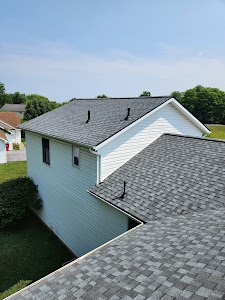Battery-controlled embellishments on a boat frequently work on some different option from a 12-volt power source. For instance, trolling motors frequently require either 24 or 36 volts. Most promptly accessible batteries do not generally come in those voltages; so you can associate at least two in a series to twofold or triple your voltage while keeping up with a similar limit rating Amp Hours. A significant thought during this cycle is battery science; do not utilize two unique sciences while associating in series or equal. Ensure the voltages are something very similar, yet more significantly the charge rates and limits are something similar to assist with delaying battery life. Most importantly, ensure what you have, you would rather not feed 36 volts to a 12 volt trolling motor. Whenever you have discovered that you without a doubt have a 36 volt trolling motor you then need to ensure you have space in the battery compartment for three standard size marine batteries. Likewise, it is insightful to go the additional yards and ensure you have either boxes or mounting sections for each of the three batteries. You do not need these power sources flipping all around the structure while you are hitting waves.
Wiring In Series
 You will initially have to make two jumper wires, around 2 feet in length. You can get the important parts at any car supply store or boat vendor. When you have these finished you are prepared to make the series association. To make it somewhat less difficult and keep it straight, give the batteries a number assignment, for example, 1, 2, and 3. It does not make any difference which number is allotted to which battery as this is done with the goal that the other directions are straightforward. Interface your most memorable jumper wire between the adverse terminal of the principal battery and the positive terminal of the subsequent battery. Interface your subsequent jumper wire between the adverse terminal of the subsequent battery and the positive terminal of the third battery. Secure the positive lead from the trolling motor to the positive terminal on the principal battery. Affix the adverse lead from the trolling motor to the adverse terminal on the third battery. Your series is currently finished and you have an entire 36 volts of capacity to your trolling motor. For a 24 volt framework, you basically leave out the third battery and interface the adverse lead from the trolling motor to the adverse terminal of the subsequent battery.
You will initially have to make two jumper wires, around 2 feet in length. You can get the important parts at any car supply store or boat vendor. When you have these finished you are prepared to make the series association. To make it somewhat less difficult and keep it straight, give the batteries a number assignment, for example, 1, 2, and 3. It does not make any difference which number is allotted to which battery as this is done with the goal that the other directions are straightforward. Interface your most memorable jumper wire between the adverse terminal of the principal battery and the positive terminal of the subsequent battery. Interface your subsequent jumper wire between the adverse terminal of the subsequent battery and the positive terminal of the third battery. Secure the positive lead from the trolling motor to the positive terminal on the principal battery. Affix the adverse lead from the trolling motor to the adverse terminal on the third battery. Your series is currently finished and you have an entire 36 volts of capacity to your trolling motor. For a 24 volt framework, you basically leave out the third battery and interface the adverse lead from the trolling motor to the adverse terminal of the subsequent battery.
Wiring in Equal
You Affix the positive lead from the Best trolling motor battery to the positive terminal on the principal battery; and the adverse lead from the trolling motor to the adverse terminal on a similar battery. You then, at that point, interface a jumper wire from the positive terminal of the principal battery to the positive terminal of the subsequent battery; the subsequent jumper wire associates the adverse terminal of the primary battery to the adverse terminal of the subsequent battery. This pairs your ability of 12 volts to control your trolling motor and two times the run time.

